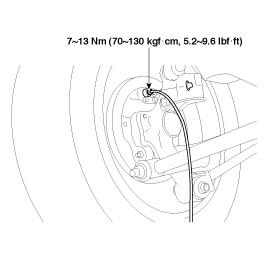Disconnect the brake hose(C) from the brake line(A) using a 10mm flare-nut wrench(B).
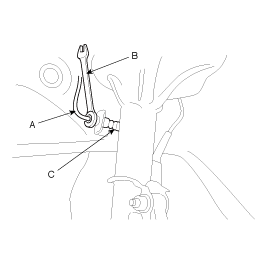
Check the brake tubes for cracks, crimps and corrosion.
Check the brake hoses for cracks, damaged and oil leakage.
Check the brake tube flare nuts for damage and oil leakage.
Disconnect the brake hose(C) from the brake line(A) using a 10mm flare-nut wrench(B).

Remove the brake house clip(A) from the brake(B).
Remove the connector bolt (C), and disconnect the brake hose from the caliper.
Install the brake hose(A) on the knuckle with 12mm flange bolt (B) first, then connect the brake hose to the caliper with the connector bolt (C) and new sealing washers (D).
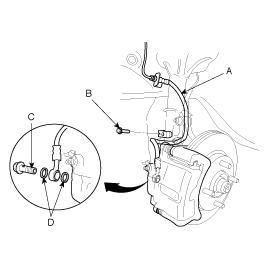
Install the brake hose (A) on the upper brake hose breacket (B) with a new brake hose clip (C).
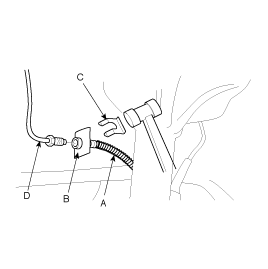
Connect the brake line (D) to the brake hose.
After installing the brake hose, bleed the brake system.
Do not reuse the drained fluid.
Always use Genuine DOT3 or DOT 4 Brake Fluid. Using a non-Genuine DOT or 4 brake fluid can caese corrosion and decrese the life of the system.
Make sure no dirt of other foreign matter is allowed to contaminate the brake fluid.
Do not spill brake fluid on the vehicle, it may damage the paint; if brake fluid does contact the paint, wash it off immediately with water.
The reservoir on the master cylinder must be at the MAX (upper) level mark at the start of bleeding procedure and checked after bleeding each brake caliper. Add fluid as required.
Make sure the brake fluid in the reservoir is at the MAX (upper) level line (A).
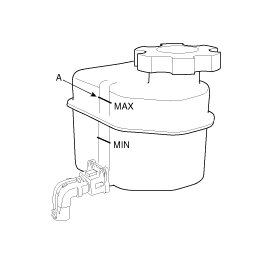
Have someone slowly pump the brake pedal several times, then apply pressure.
Lossen the right-rear brake bleed screw to allow air to escape from the system. Then tighen the bleed screw securely.
Repeat the procedure for wheel in the sequence shown below unit air bubbles no longer appear in the fluid.
Refill the master cylinder reservoir to MAX(upper) level line.

FRONT DISK BRAKE
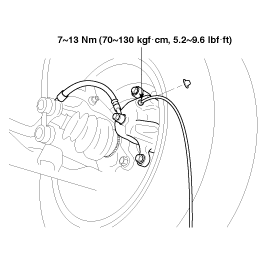
REAR DRUM BRAKE
